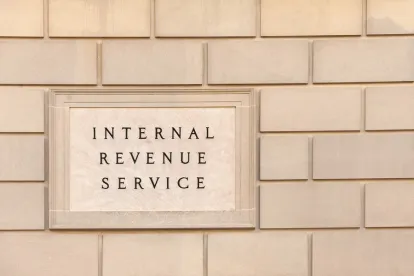Bottom Line: The Internal Revenue Service (IRS) issued new guidance about the new in-service distribution opportunity for qualified birth and adoption distributions (QBADs) for tax-qualified retirement plans, which became an available distribution for retirement plans under the Setting Every Community Up for Retirement Enhancement Act, or SECURE Act.
Retirement plan sponsors who are considering adding QBADs to their 401(k) or 403(b) retirement plans should take the time now to review the applicable guidance and work with their advisors and third-party administrators on how to implement this new distribution option and prepare required plan amendments.
Background: As most retirement plan sponsors are aware, the SECURE Act made several changes to the rules for tax-qualified retirement plans. We described some of the key SECURE Act provisions in an earlier article (available here). One of the more significant changes under the SECURE Act added a new optional in-service withdrawal opportunity for plan participants for QBADs. A QBAD is an in-service distribution from an eligible retirement plan that is made to a plan participant any time during the one-year period after the birth or legal adoption of a child.
The SECURE Act made it clear that QBADs (1) are not subject to the 10% early withdrawal penalty, (2) are not treated as an eligible rollover distribution, (3) are limited to $5,000 per qualifying event, and (4) can be recontributed to the qualified retirement plan or an IRA (and such repayment will be treated as nontaxable). However, many retirement plan sponsors and service providers felt that the SECURE Act provisions alone did not give sufficient guidance for retirement plans to begin implementing QBADs.
QBAD Guidance Issued: On September 2, 2020, the IRS issued Notice 2020-68 (available here), which provided much-needed guidance on the implementation of several sections of the SECURE Act, including the provisions regarding QBADs. While this guidance addresses many of the open questions relating to QBADs, the IRS also indicated that it plans to issue additional guidance in the future to address the QBAD recontribution rules.
For now, Notice 2020-68 clarified the following key issues for retirement plan sponsors who wish to implement QBADs:
-
An “eligible adoptee” is any individual who has not yet attained age 18 or is physically or mentally incapable of self-support (as defined under Code section 72(m)(7)), but cannot be an individual who is the child of the taxpayer’s spouse.
-
Each parent may take a QBAD of up to $5,000 with respect to the same child or eligible adoptee.
-
Individuals who experience the birth of multiple children or adoption of multiple eligible adoptees may take a QBAD of up to $5,000 with respect to each eligible child. For example, a plan participant who gives birth to twins may take a QBAD of up to $10,000.
-
Retirement plan sponsors are not required to permit QBADs—it is entirely discretionary. However, if a retirement plan permits QBADs, then that retirement plan must also accept recontribution of the QBAD if the individual received a QBAD from that plan and the participant is eligible to make rollover contributions to the plan at the time he or she wishes to recontribute the QBAD.
-
Individuals may recontribute any portion of a QBAD to an applicable eligible retirement plan in which the individual is a beneficiary, as long as the plan accepts rollovers.
-
Retirement plan sponsors may rely on a participant’s reasonable representation that he or she is qualified to take a QBAD unless the plan sponsor has actual knowledge to the contrary.
-
Any individual who takes a QBAD must include the name, age, and taxpayer identification number of the child or eligible adoptee on the individual’s income tax returns for the year in which the distribution is made.
-
Individuals who take distributions from a qualified retirement plan that does not otherwise permit QBADs may nonetheless treat the distribution as a QBAD on their individual tax returns. This means that the individual may claim relief on his or her tax return for the 10% penalty that applies to certain distributions.
Stay-Tuned: As explained above, while Notice 2020-68 provides answers to many of the open questions that retirement plan sponsors, service providers, and legal advisors had regarding the implementation of QBADs, the IRS has indicated that it plans to issue additional guidance on the QBAD recontribution rules. Until then, retirement plan sponsors who wish to amend their plans to permit QBADs should consult with their legal advisors and service providers to identify appropriate implementation procedures and any required plan amendments.





 />i
/>i

